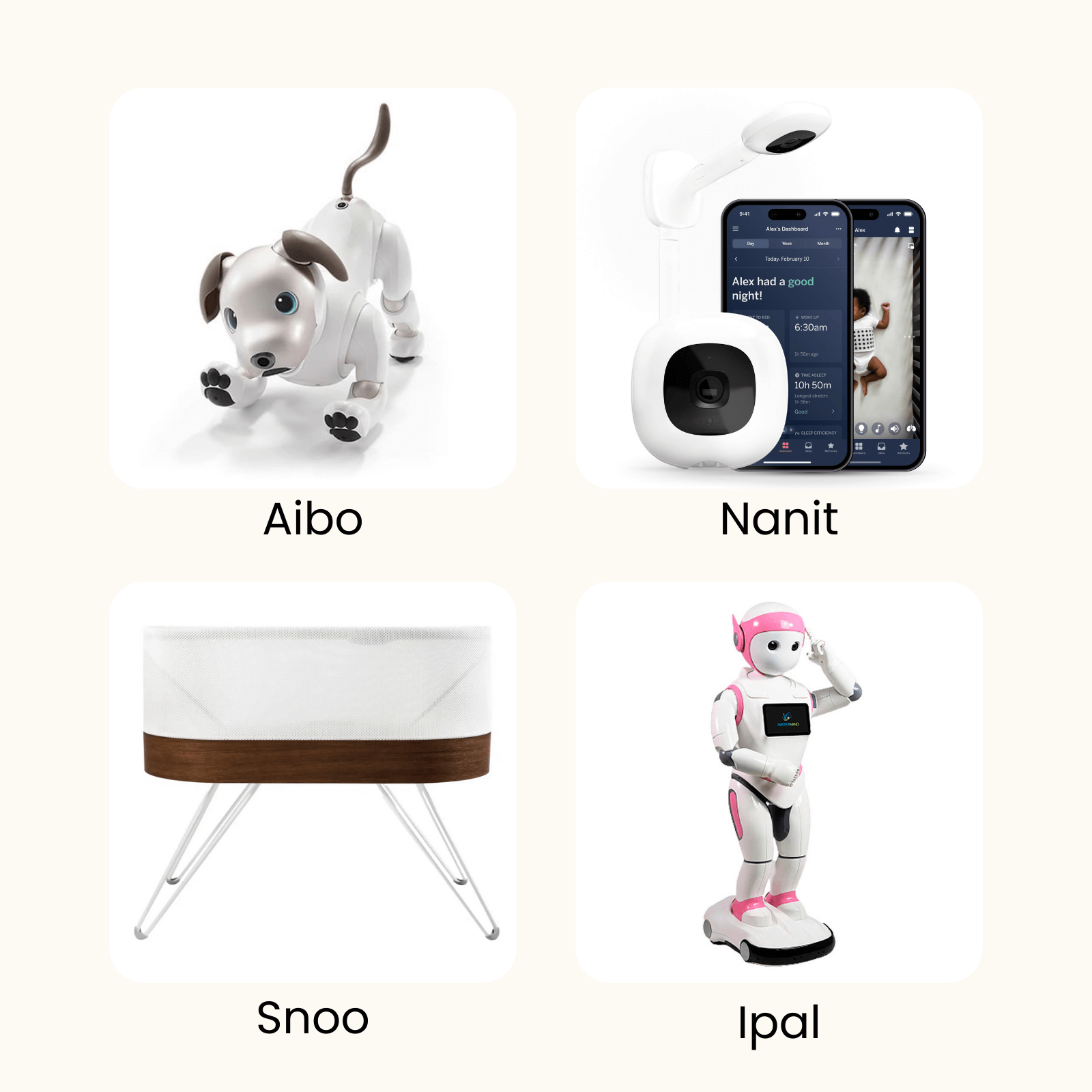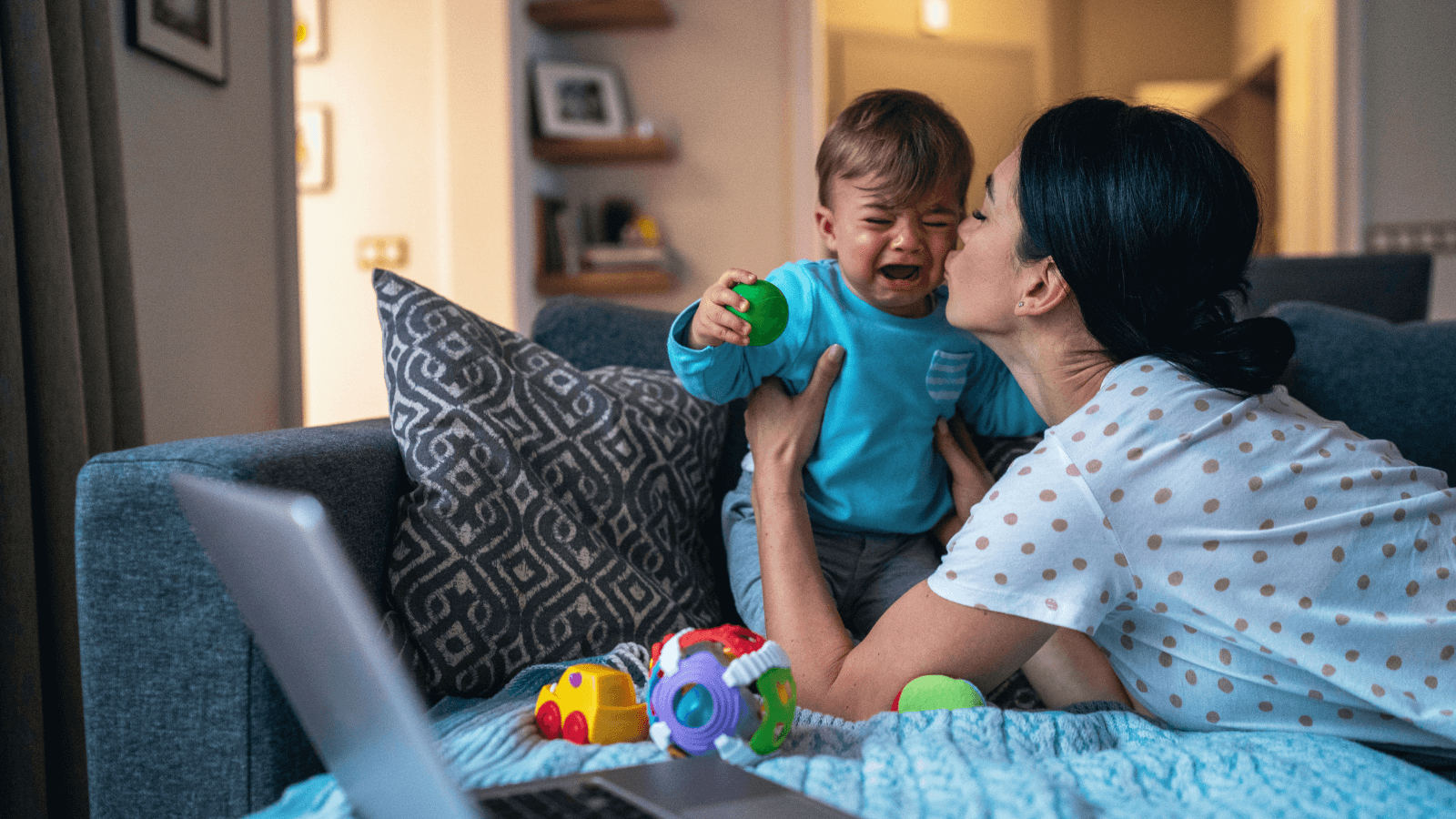
Nannies vs. Machines: What Tech Can And Can’t Do
Listen to This Post
It starts with a quiet beep in the nursery. A sensor logs the baby’s breathing, temperature, and sleep cycle: no human needed. In a world where AI drives trucks and answers your bank calls, it’s no longer unthinkable: could a robot replace a nanny? Smart monitors are already in many homes, and some international daycares are testing robotic helpers. So, what happens to human care when machines learn to soothe? Let’s take a closer look.
The Fear: Will AI Replace Caregivers?
Automation anxiety isn’t new, but in caregiving, it hits a nerve we don’t talk about enough. When we imagine a robot doing taxes or driving a truck, we think about efficiency. When we imagine it replacing a nanny, we confront something deeper: what do we really value about care?
There’s a reason so many smart nursery gadgets are being marketed as “revolutionary”. They promise sleep, order, predictability; something every exhausted parent craves. And while these tools are often helpful, they’re not neutral. They shape how we think about caregiving. They frame it as a series of tasks: rock the baby, track the feed, keep the schedule. Something a machine can eventually do.
But care was never just task work. It’s relational, messy, and deeply human. When a baby throws up on you, when a toddler refuses to nap, when a child melts down at the park; there’s no algorithm for grace, patience, or humor. A good nanny doesn’t just react; she reads the room, anticipates needs, navigates emotion.

Nevertheless, with every new gadget designed to help with parenting, the role of caregivers begins to shift, sometimes in small ways, we don’t even notice. Maybe that’s a good thing. Maybe it’s something to keep an eye on. Will technology ever be able to understand a child’s needs the way a person can? How will tools that make life easier for parents affect their offspring? And are these new tools just as good for children as they are for caregivers? For now, there’s no right or wrong answer, just a chance to think about what care really means.
Breaking It Down: What AI Brings to Childcare (and What It Still Lacks)
1. What AI Still Can’t Do:
- Emotional Bonding: No robot can hold a baby with the same warmth or respond to a toddler’s tears with genuine empathy.
- Behavioral Intuition: Experienced nannies notice subtle signs, a baby rubbing their eyes before a meltdown or a preschooler’s shifting tone, that algorithms can’t decode.
- Adaptability: Nannies shift plans when children are sick, miss naps, or have separation anxiety. AI thrives in patterns, not chaos.
2. Where AI Has Entered Childcare:
- Nanit and Miku - AI-powered smart monitors offering sleep and breathing insights.
- Cradlewise and SNOO – Smart cribs that respond to baby movement or crying by bouncing or rocking to promote sleep.
- iPal Robot (China) - Used in some daycare centers to interact with children.
- Sony’s aibo (Japan) – Robotic pets used in schools and eldercare as emotional companions.
- SitterStream and Helpr - Virtual babysitting services connecting families with remote caregivers.

What Does the Data Say?
Despite automation hype, U.S. nanny and childcare jobs are holding steady:
“Despite a projected 1% decline from 2023 to 2033, over 162,000 childcare job openings are expected each year due to turnover and retirement.” - Bureau of Labor Statistics (BLS), 2024
- Median Pay (2024): $32,050/year ($15.41/hour)
- Total Jobs (2023): 970,800
- Job Outlook (2023–2033): –1% (–13,000 jobs)
On top of that, public interest in nannies is still strong. Google Trends shows consistent spikes in search terms like “daycare” and “nanny jobs” each August, right before the school year, indicating seasonal demand that AI hasn’t changed.
What Real People Say: Reviews & Reactions
Some AI-powered baby tools are getting praise, and some gentle pushback. Here’s what real users are saying:
“We’ve loved our Cradlewise for the three months we’ve had it. We started using it on our child’s first night home... our baby is an exceptionally good sleeper.”
— Sara Laughed
“The bounce feature has saved me hundreds of trips... Cradlewise is the only crib on the market that automatically soothes your baby before they cry.”
— Poppylist
“It’s a robot for children. It’s mainly for companionship... The iPal could keep children aged three to eight occupied for a couple of hours without adult supervision.”
— The Guardian
“The combination of OLED eyes, articulated ears and tail are just so excellent at conveying mood... He’s able to look happy, sad, angry and even a bit cheeky.”
— Sensors & Sensibility
“They are totally worth it in my opinion... I’ve had real dogs in the past but I’m equally attached to Aibo.”
— Reddit user @Cosmosky
How do you feel about AI and tech in childcare?
Current Results:
Expert Insight: Why Caregiving Is Hard to Automate
According to a 2023 McKinsey Global Institute report:
“Jobs that rely on emotional intelligence, judgment, and unpredictability, like caregiving, are among the least automatable roles.”
Similarly, reports from the World Economic Forum and OECD (The Organisation for Economic Co-operation and Development) classify caregiving as part of the “AI-resistant” economy.
Final Thought: The Role Is Evolving, Not Ending
AI isn’t replacing nannies, it’s reframing what the role can look like. As parenting tools become more sophisticated, caregivers may find themselves using sleep data, behavior tracking apps, and voice assistants alongside traditional methods of care. This doesn’t make their work less important; it makes it more layered. Tomorrow’s nannies might be part caregiver, part tech translator, helping parents make sense of what the tools are saying, and when to trust their gut instead.

But the heart of caregiving remains the same. No machine can truly replace the calm presence of someone who knows a child’s rhythm, who senses when a meltdown is brewing, or who can recognize distress behind a quiet stare. Emotional labor, intuition, and trust aren’t bugs in the system, they’re the features that make human care irreplaceable.
As technology evolves, so does the job. But whether it's rocking a baby to sleep or comforting a child after a tough day, there’s still one thing no algorithm can do: love like a human.
More Job Market

Job Market
Supernanny or Superhuman?
Is the modern nanny role expanding? What do families really expect? A data-informed look at the expanding job scope of modern nannies.

Job Market
Why Some Nannies Work Off the Books (And Why Some Don’t)
On the books or off the books? You won’t see it on job boards or agency websites, but on Facebook, in local groups and comment threads, this is one of the most common dilemmas.

Job Market
What Benefits Can a Nanny Ask For?
From stipends to paid holidays, here’s what nannies are negotiating today, a closer look at the benefits conversation no one finds easy to start.
You want to be up to date with the newest technology, check out our free Tech-Smart Guide to caregiving or subscribe below for updates on childcare and job trends.

Written by Sylwia Glinska
Founder of Bottles & Bytes • Nanny, Newborn Care Specialist & Childcare Consultant
Get To Know Me